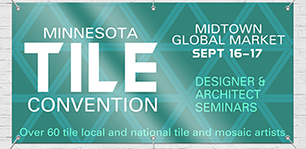UV Digital Printing vs Screen Printing
Quick Guide:
UV (Digital Inkjet) Printing Advantages: |
Screen Printing Advantages: |
Drawbacks: |
Drawbacks: |
View the screen printing color palette here.
What is UV or Digital Inkjet printing?
This process is similar to any home consumer inkjet printer but on a larger industrial scale. It can switch from one image to another at the press of a button. Our printers use industrial ink that is suitable for indoor and outdoor use. Printing with a full color process is as easy as a single color as the printers are made with very high tolerances and require little adjustment. This allows for near photograph quality images. All colors produced are a mix of Cyan, Magenta, Yellow and black (CMYK) so Pantone® colors may not be as bold and vibrant as on a press using a specific color ink. We print directly to the substrate usually "ganging up" multiple images to maximize the material. The images are separated by a cnc controlled drag knife system. Although our throughput is among the fastest in the industry extremely large jobs of a single image are better suited for screen printing.
What is Screen printing?
Screen printing is an industrial version of a stencil. Once the screen is burned using a photographic process it can be reapplied multiple times with little effort. The color image supplied is broken up into individual colors and each color is burned to a separate screen. Screens are made from a fabric material with a very precise pattern so all the tiny holes are the same size. The holes that are left open after the screen making process will be the image. Ink is forced through the holes onto the material to be printed using a squeegee which leaves a thin layer of ink on the material. It is cured in an oven and ready for another color. There is some setup time involved with screen printing to get all the colors into alignment (registration), to change images, and to adjust the machines squeegee pressure to lay down the appropriate amount of ink. The press can print on precut materials so once all the colors are printed the sign does not require any finishing. When printing, you will print one color at a time and cure that color before applying the next color this makes full color screen printing more expensive. 1 color prints require very little setup but as the number of colors increases as does setup time. The printing process is very quick once the screens are prepared and setup. Larger 1-2 color jobs can be printed in a fraction of the time. Screen printing is ideal for larger jobs with one image and fewer colors as you get to higher quantities cost goes down. Ink can be tuned for the material being printed and spot inks of a specific color can be used so solid blocks of color are usually smoother and bolder than on an inkjet printer.
PLEASE NOTE: Due to the complexities of the screen-printing process, these items are NOT covered by our Goof Proof Guarantee



